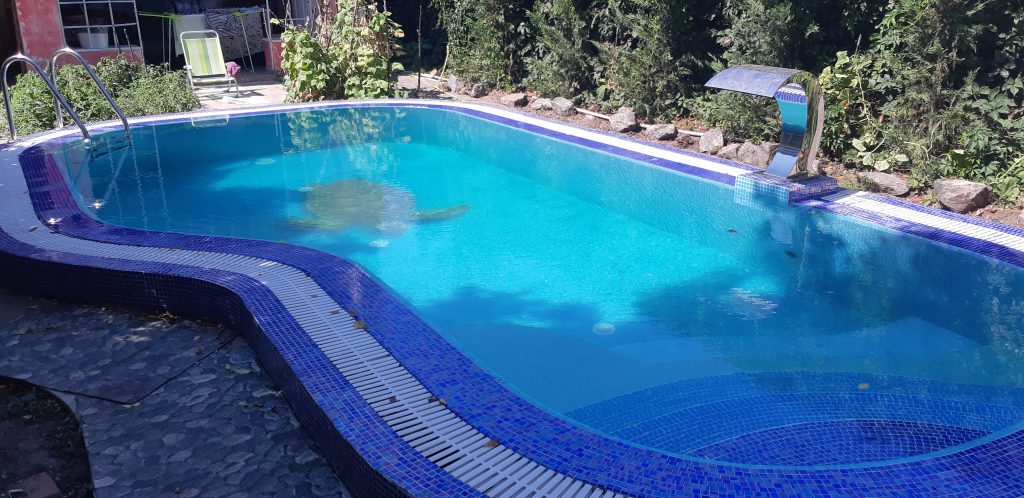How the system works
A personal pool at the dacha or in the yard of your cottage is becoming increasingly popular among the population. When constructing a pond, the question inevitably arises about the type of filtration system. There are two systems: skimmer and overflow. Let’s consider the device and functioning of the overflow system.
Overflow pools
A modern concrete overflow pool can have any configuration. Customers prefer to cover them with tiles of different sizes, colors, mosaic panels, porcelain blocks, and other various materials. In European countries, such designs are the most popular. The bowl is completely filled with water, the excess of which overflows from above over the edges.

Unnecessary elements are removed with the water: small debris, pollution that floats on the surface. The role of the overflow will be played by a unique general water intake system. This is the most important component for arranging your own pond.
How is the pool overflow arranged?
The edge of the water poured into the bowl is usually located at the same level as the sides. Unique water intakes are located along the perimeter. The entire system is equipped with an overflow tray around the entire perimeter of the structure. The water displaced during bathing enters the overflow trays. From them it flows into the compensation tank, where the water is cleaned and enters the bowl through the feeding nozzles. The calculation is carried out by the company’s engineer. A detailed diagram of the overflow pool is shown below

Features
High technologies for the construction of modern overflow pools allow you to reduce the time for their construction, significantly increasing their service life.
Advantages
- The water surface is flush with the upper sides, creating a sophisticated look for the entire structure.
- Water that spills out of the bowl does not spread around the sides. It flows down the trays through the grates installed around the perimeter. From there, it drains into a special storage tank.
- Water supply nozzles are located at the bottom of the reservoir. The water flows rising upwards prevent the accumulation of debris, dirt, and turbidity at the bottom. The jets from the nozzles move settled contaminants closer to the surface, from where they fall into the tray.
- Intensive water circulation prevents the formation of stagnant areas.
- Reservoirs constructed in this way are free from the problem of waterline contamination by salt deposits, small debris, rust, and fat particles.
Disadvantages
- The average cost of building an overflow pool is 30% more expensive than a similar skimmer pool.
- The technical room of the reservoir should be located below the water level to accommodate all equipment and ballast tanks.

